Where Can I Take My Dog To Swim? 6 Dog-Friendly Places
My dog Sherlock loves swimming, something that’s innate for a Golden Retriever. Whether it’s a puddle, a basin of water, or the nearby lake, he will soak in it happily. If your dog loves it just the same, you might be wondering, where can I take my dog to swim?
Below, I listed six of the most dog-friendly places you can consider. Still, you should check local regulations on specific places you want to visit to make sure they allow pets on the water.
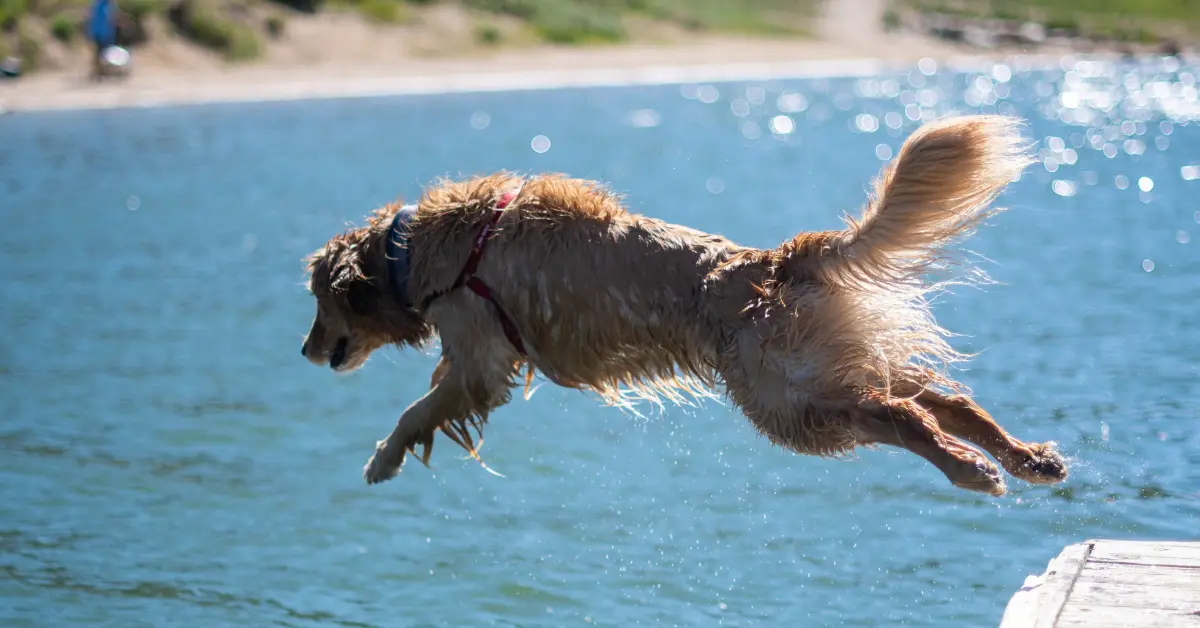
Where Can I Take My Dog To Swim?
If you’re looking for places to take your dog for a swim, the following might be excellent options:
1. Dog park pools
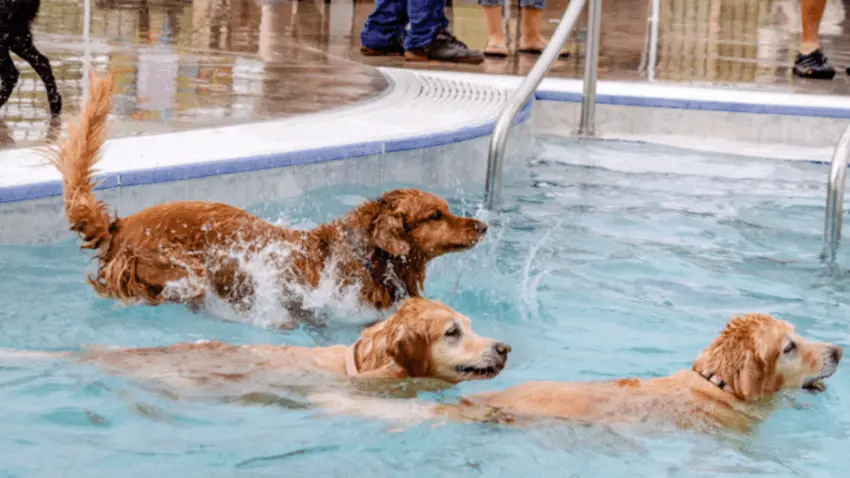
Many dog parks have a pool in them where dogs can freely swim. Take note that these are made for canines only, so pet owners aren’t supposed to join.
If you’re not sure whether there’s a dog park pool in your area, you can call the Department of Parks and Recreation in your locality. They can give you a list of dog parks with integrated pools where you can take your dog.
However, you should know that dog park pools can be cesspools too. If your dog is yet to receive its complete vaccination, I don’t recommend letting it plunge into a park pool with other canines. It’s best to wait until your pooch is fully immunized before you let it swim with other dogs.
Also, after a swim in a dog park pool, always rinse your dog before going home. This will remove any dirt and bacteria that cling to its coat.
2. Public beaches
If there are no dog park pools in your area, a public beach is an excellent option. This will let your dog run, swim, and have fun in the open.
But before you bring your dog for a swim on the beach, you have to do some research. Make sure that it’s allowed for beach-goers to bring their dogs in the open. Take note that some public beaches require dogs to be leashed if their owners bring them on the shore.
After your dog swims in saltwater, you must wash its body properly. This is to prevent the salt from drying the skin and forming a bad smell. It will prevent them from dog smelling bad after being outside
3. A local lake
If public beaches are a big stretch for your dog, a local lake will work. Again, you have to check if they allow dogs to swim on the lake. I suggest that you contact your local recreation center to inquire about this part. You can also call the lake administration itself to ask.
Aside from that, most lakes will only open a certain area for dogs. This is to prevent the canines from disturbing anglers or getting tangled on the line.
4. Hydrotherapy pools for dogs
If you can’t find open water to accommodate dogs, a hydrotherapy pool for canines will do. There are many canine hydrotherapy centers in the US and Canada, so it should be easy to find one that suits your budget.
In these facilities, your dog can swim freely. The staff can also give helpful hydro exercises to your canine, especially if it’s suffering from some kind of orthopedic problem.
If you’re not familiar with any hydrotherapy center, you can ask your dog’s vet. He or she surely has worked with a hydrotherapy center before.
5. Public pools during the end of the season
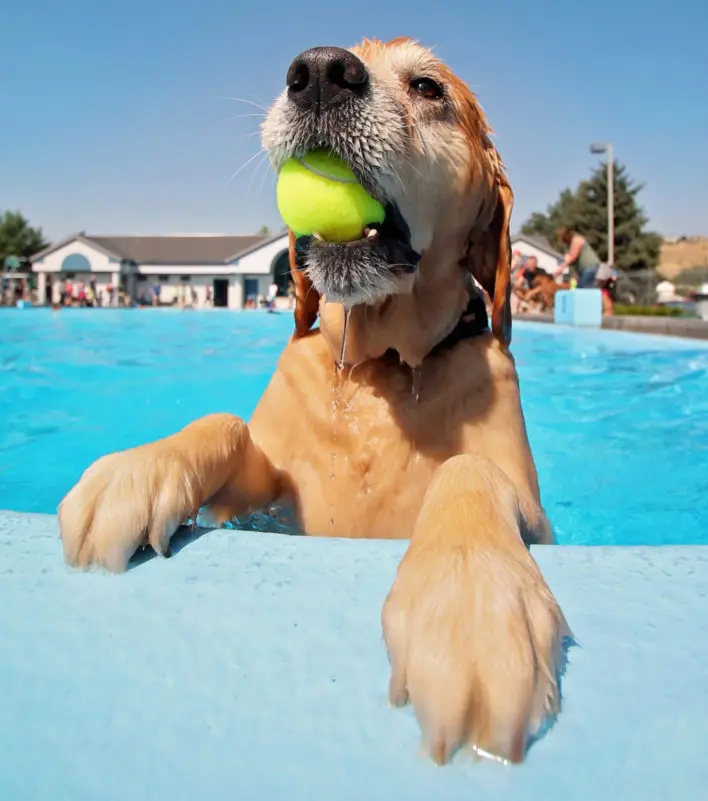
During the end season, some public pools open their gates to dog owners to bring their pets. They let the dogs swim in the pool before they drain and clean it up. Although not all public pools do this, it is becoming popular.
Public pools that host these end-season events often run a fund drive. The collected donations or fees are usually donated to local pet charities or shelters.
6. Your own pool
If all the options above are not available, your pool will be the safest place for your canine. Your dog will surely enjoy the swim with added floating toys. You can even do this regularly as a form of exercise for your dog. Playing fetch will allow your dog to burn calories without stressing its joints.
Safety tips when swimming with a dog
Like with humans, safety should always be the priority when taking your dog to swim. It’s essential to keep the following points in mind:
Don’t assume that your dog can swim right away
Contrary to common beliefs, not all dogs aren’t born with the ability to swim. Some can’t swim without a floating vest on. These are dogs with short legs like Dachshunds, Bulldogs, and Pugs. Make sure that you put on a floatation device on your canine before letting it go into the water.
Don’t let the dog drink the water
Ocean and lake water aren’t potable. These bodies of water can harbor millions of bacteria that will wreak havoc on your dog’s tummy. Also, ocean water is salty and can cause dehydration in a canine.
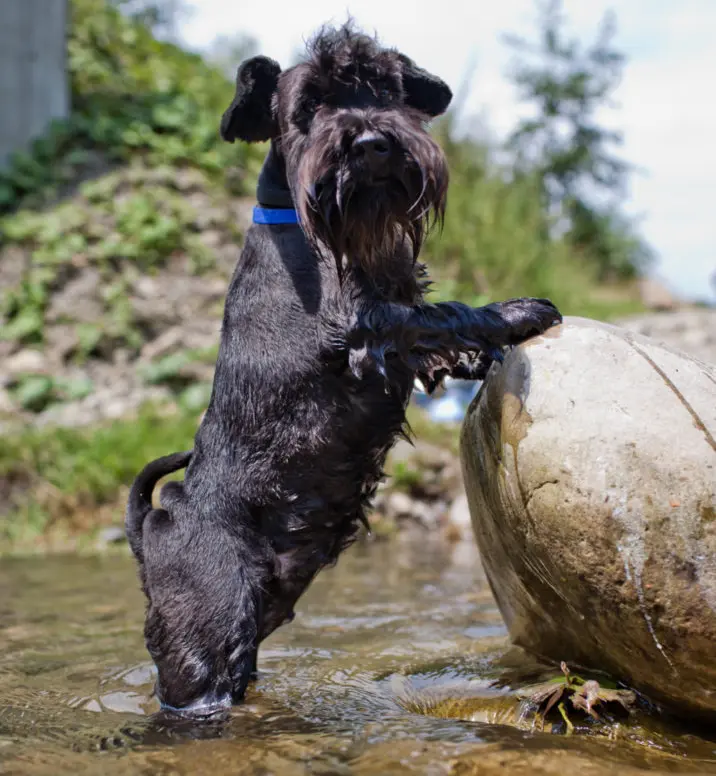
You should always keep your eye on the dog so you can intervene whenever it tries to drink the water.
Train your dog first
Before you let your dog run into the water, make sure that it’s trained for basic obedience. This will let you call the dog back if there are hazards around.
Let the dog swim at its own pace
Not all dogs are fond of water, so it’s important to let them approach it on their own volition. Take it slow until your dog is ready to jump into the water.
Some dogs just need a little more convincing that the water isn’t something to be scared of. Positive reinforcement will go a long way here using treats and praises.
Choose a shallow spot
While your dog might be fond of swimming, I don’t recommend letting it jump on a deep part of the water. Choose a shallower area, preferably closer to the shore or boardwalk, so your dog can go back easily when it’s tired.
If your dog is still learning how to swim, keep it leashed. I suggest joining the dog in the water, so it will realize that swimming isn’t harmful.
What dog breeds can’t swim?
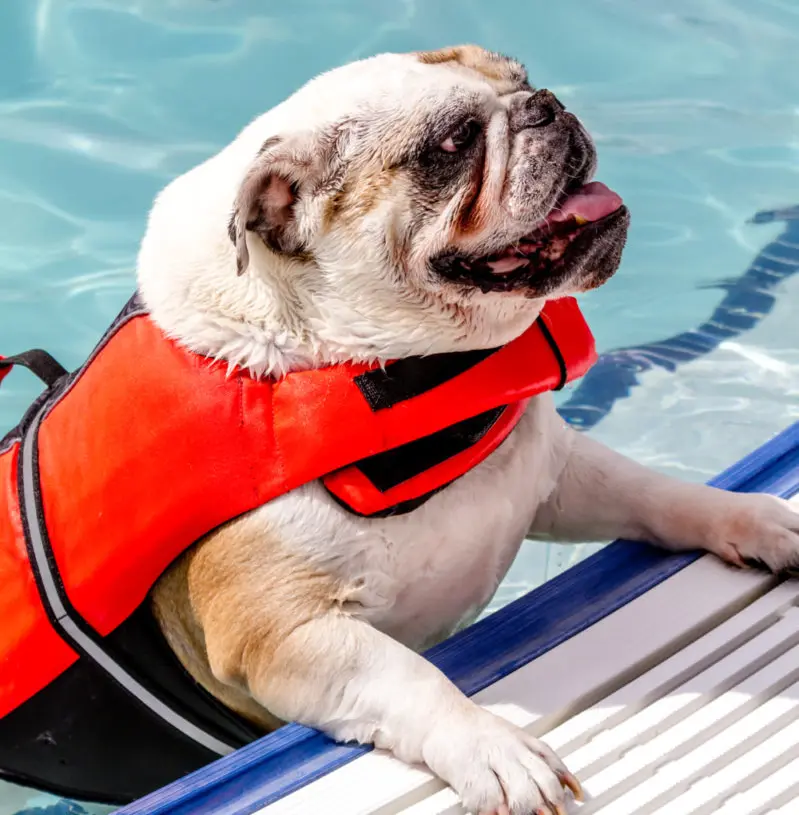
Some dogs don’t have the physical structure to swim. These breeds include Pugs, Bulldogs, Dachshunds, Boxers, and Basset Hounds. These canines are flat-chested and have short legs. Also, their torsos are stocky, which makes it hard for them to float and maintain buoyancy.
Still, it doesn’t mean that the likes of Pugs can’t enjoy swimming. You just have to train the canine and put a dog life vest on them.
How do I introduce my dog to the pool?
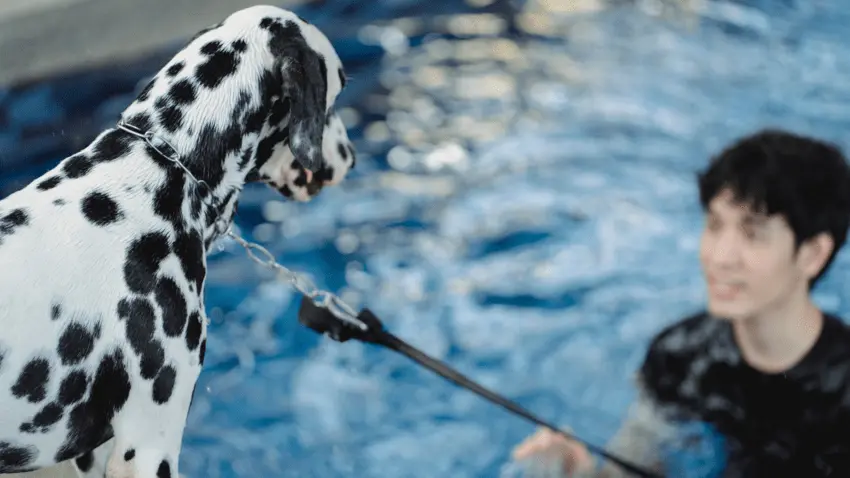
Some dogs will jump into the pool right off the bat, while others will be scared. If your pooch is the latter, you should introduce the pool slowly. Make sure that the dog has a life vest on.
You can coax the dog to get nearer to the pool by luring it with treats. Let your dog approach the edge of the pool, but don’t push them into the water. Let them observe while you keep giving treats.
After that, get into the water and try calling your dog. Hold a treat and see if your pooch will dive. If the dog gets into the water, take hold of it right away. This will teach your dog that you’re there to keep him afloat.
Some dogs will automatically paddle their legs when they get into the water. When your dog starts doing this, lift its body to show him how to float.
Is it too late to teach a dog to swim?

As long as the dog is in good health, it’s never too late to teach it to swim. Make sure that you start slow and in shallow waters. For older dogs, you should keep swimming sessions short.
It’s important to put a dog on a life vest if it hasn’t swum in open waters before. Remember that each dog has its own pace. Some will learn it fast, while others will take a little more guidance.
Conclusion
Where can I take my dog to swim? A dog park pool is the best option, but you can also look for dog-friendly beaches, lakes, and even public pools. Wherever you are taking your dog, always check the rules first to avoid any trouble. Most of all, you should prioritize your dog’s safety by providing a dog life vest and continuous monitoring.
Not all dogs are natural swimmers, so require time and effort to be taught. Introduce your dog to the pool slowly and give the guidance and support it needs. A good swimming session can strengthen your bond with your lovely dog.
I hope the information from this article will help you add fun to your dog’s life,
Thank you for reading!
